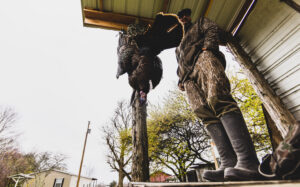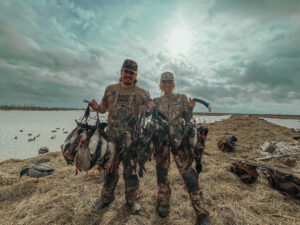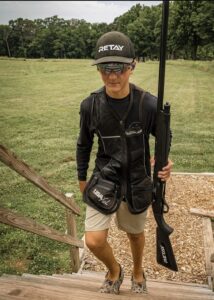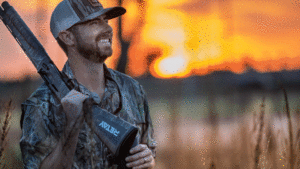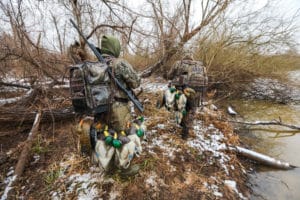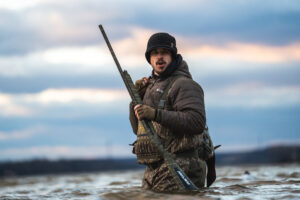
Hunting Equipment for Bowhunting Spring Turkeys
By Conner Wakefield

The clock springs forward an hour. A warm Spring rain washes away the last nuisance of snow. Robins begin to appear out your window. And soon those big boss Toms can be seen strutting their stuff amongst the winter flocks.
For a Midwestern Bowhunter like myself, Nebraska has always been the closest state that opens early for an archery spring turkey season. Chasing gobblers with a bow, no blind, while self-filming is not for the weak-minded. You’ll quickly learn that it’s a challenge you must love and embrace. With just a few jakes under my belt and as a newer onset hunter I’m still trying to notch my first tag on a Spring long beard.
There are a handful of things that will make your pursuit of a spring sad daddy with a bow a little easier. First is; a bow bipod. This allows you to keep your bow in a vertical position with an arrow nocked right at your side. A small motion allows you to clip on and come to full draw with little to no movement. It’s very important that you wait for that gobbler to make a mistake before drawing. This means he turns his back to you, passes behind a big tree or something else but you’ll know when.
Hands-free is the name of the game when you bowhunting these beautiful birds with amazing eyesight. Secondly, you’ll want to be versed in a few different mouth calls. Try to begin practicing as soon as the snow melts off. Soft purrs and clucks when the bird is close is all it takes to seal the deal. Having a few different mouth calls allows you to sound like different birds. Don’t glue yourself to one spot either. If you watch turkeys at all you will notice they never stop moving and can be loud if you keep your ears open.

You’ll need something to catch that turkey’s attention more than just mouth calls too. Especially to bring that boss Tom into bow range. A Turkeys best instinct is its eyesight so the more realistic the decoy the better. I like to use a Jake fan from one of my past harvests to put on my Avian X Strutter. I want the strutter to be about 15-18 paces away from my set-up tree or blind. I tend to most times face the decoy in my direction so they have to come in super close to getting in the view of my strutter with the Jake fan. His Jake fan also makes him appear less superior than the approaching turkey.
Fourth, we find ourselves talking about camouflage or more important concealment. The area you set up to decoy your gobbler this spring has to provide that. You can also spice things up by adding a leafy suit which will help you when movement occurs especially on those slightly breezy days. I’ve never done it in the past but this year I will definitely be gathering surrounding brush to make myself a little blind to help disguise me as I’m coming to full draw on a long beard. You can take it a step further and even add some artificial leafing to your bow setup or cedar branches. My LOBO offers green rubber concealment kits for the riser opening I switch to come spring.

Last and probably most important if you do decide to engulf in this endeavor is going to be a positive attitude! That’s right! The ability to roll with the punches, the close calls, and the misses is what’s going to keep you in the game the longest. Persistence plays a major part in bowhunting turkeys in the spring especially when you’re talking about self-filming big sad daddy gobblers. No matter what you do out there enjoy the pursuit and let the wilderness teach you.
—CW
You can find more content by Conner at : @cjwcreative on Instagram and Film The Outdoors on Youtube

